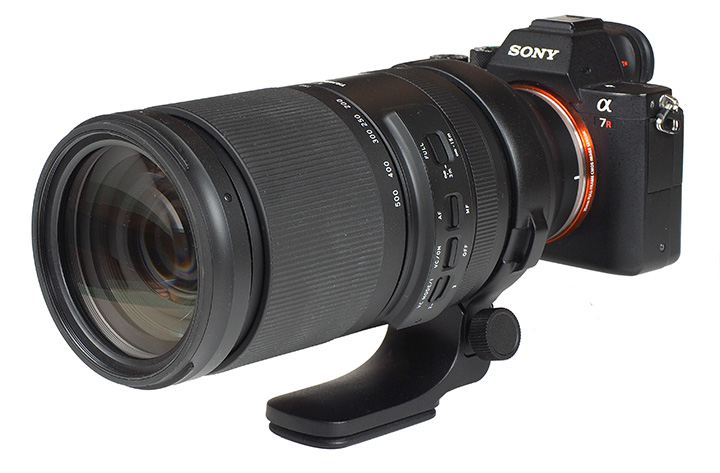Table of Contents
Introduction
Third-party vendors have a difficult task when it comes to super-tele zoom lenses in Sony E-mount. There’s a behemoth in town – the Sony FE 200-600mm f/5.6-6.3 G OSS. For many wildlife photographers, this lens alone is a reason for choosing Sony over other brands. However, competition is a good thing, especially if you can offer a twist. The Sony lens is huge by normal mortal standards and Tamron goes into a battle with a smaller interpretation of the theme – the Tamron 150-500mm f/5-6.7 Di III VC VXD. You can immediately notice two things just from the paper specs here. The Tamron ends at 500mm and it is also 1/3rd stop slower here so it’s not really surprising that it’s a more compact offering. It is also somewhat cheaper than the Sony lens at around $1400 (1200EUR) vs $2000 (1700EUR).
The build quality is pretty good. While it seems that Tamron still relied on compound materials for the lens body, it feels sturdier than most Tamron lenses. The heavy glass with no less than 25 elements may help with the impression that you are holding something very substantial here. Unlike the mentioned Sony lens, it is an extending zoom lens. Thus while the lens is nicely compact at 150mm, it is still very long when used at 500mm – especially with the attached lens hood. However, this doesn’t negate the fact that it is a comparatively transport-friendly package. The small focus ring feels a bit like an afterthought. However, most users will probably never use it anyway. The zoom ring operates reasonably smoothly despite all the weight that has to get shifted around. Given its weight, the lens does, of course, feature a detachable tripod mount – and it’s very commendable that Tamron used an Arca-Swiss compatible base for it. According to Tamron, the lens is sealed against moisture. However, they don’t mention dust here – and extending zoom lenses are prone to sucking in dust over time so it’s a bit concerning here. Another nice feature is the Flex Zoom Lock mechanism to hold the zoom position. It’s curious to note that the lens switches its max aperture from f/6.3 to f/6.7 exactly at the 500mm setting.

The Tamron lens uses a VXD (Voice-coil eXtreme-torque Drive) for auto-focusing – or in simple words: a linear drive. The AF speed is Ok on an older Sony body but extremely fast on an A7R V, for instance. The AF is also silent. A traditional Tamron specialty is the very short minimum focus distance of just 0.6-1.8m, depending on the focal length. This is good enough for a maximum object magnification of 1:3.1. While this isn’t true macro territory yet, it is still pretty useful. The VC image stabilizer comes with three modes: standard, panning, and framing priority (the latter puts the priority on a stabilized viewfinder image). We haven’t found an official figure of the potential gain of the VC system but in real life, it should give you about three f-stops.
| Optical construction | 25 elements in 16 groups inc. 2x hybrid aspherical, 1x XLD, 4x LD elements |
| Number of aperture blades | 7 (rounded) |
| min. focus distance | 0.6-1.8m (max magnification 1:3.1-3.7) |
| Dimensions | 93×209.6mm |
| Weight | 1875g |
| Filter size | 82mm |
| Hood | barrel-shaped, bayonet mount, supplied |
| Other features | moisture-resistant, image stabilizer, tripod mount (Arca-Swiss compatible), fluorine front element coating |
Image Distortions
The Tamron 150-500mm f/5-6.7 Di III VC VXD does rely on auto-correction with respect to image distortions. In RAW images, it produces a medium level of pincushion distortion in the low- to mid-range. The issue eases a little at 500mm.
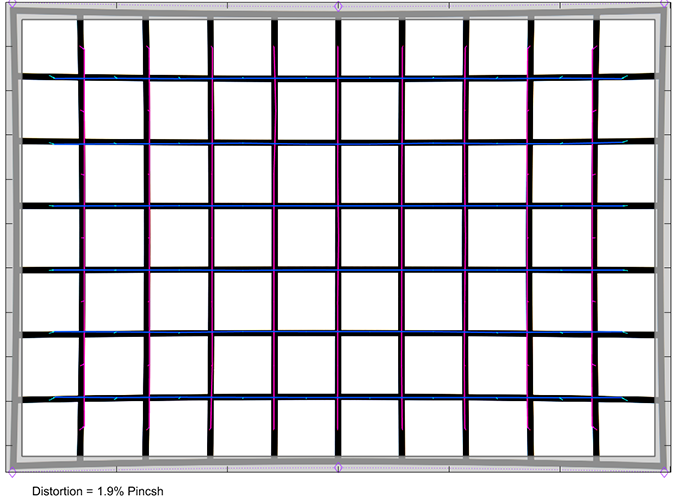
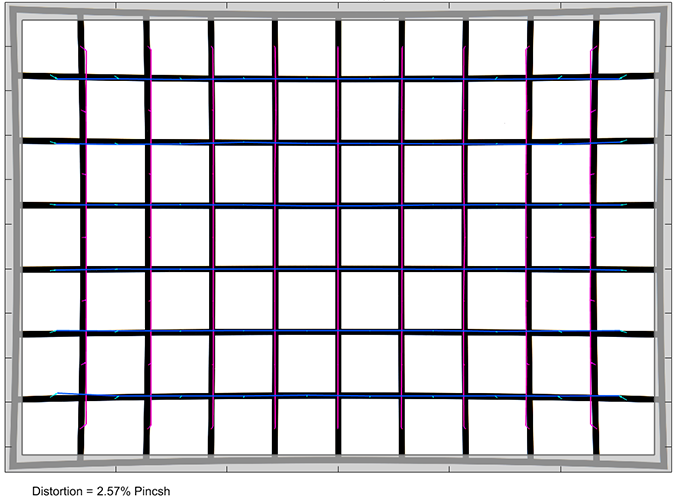
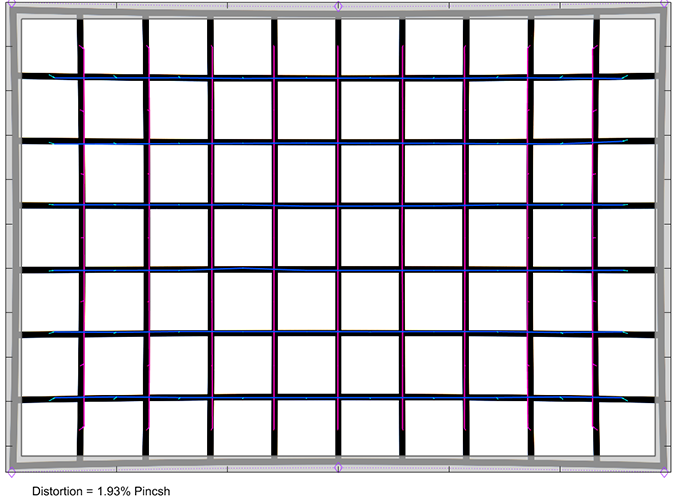

With activated image auto-correction, the distortions are perfectly corrected, as you can see below.

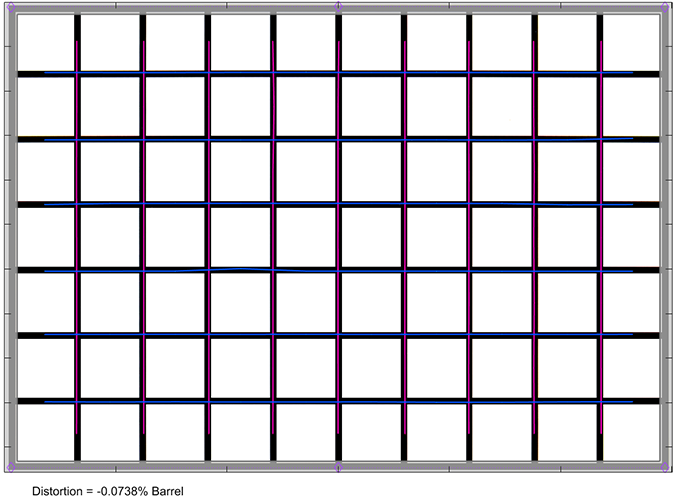
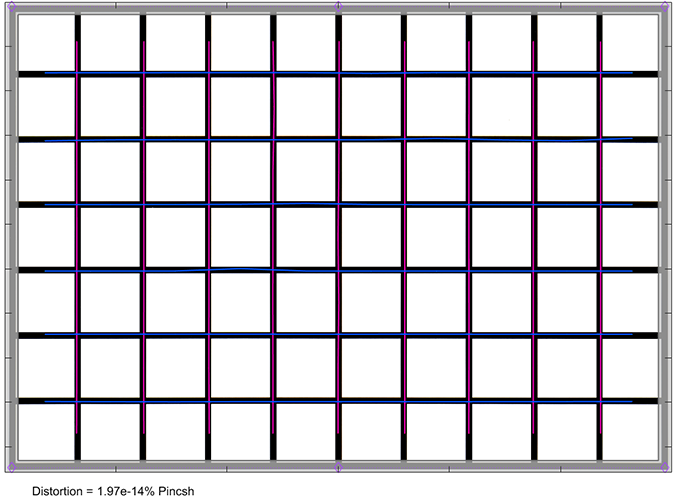
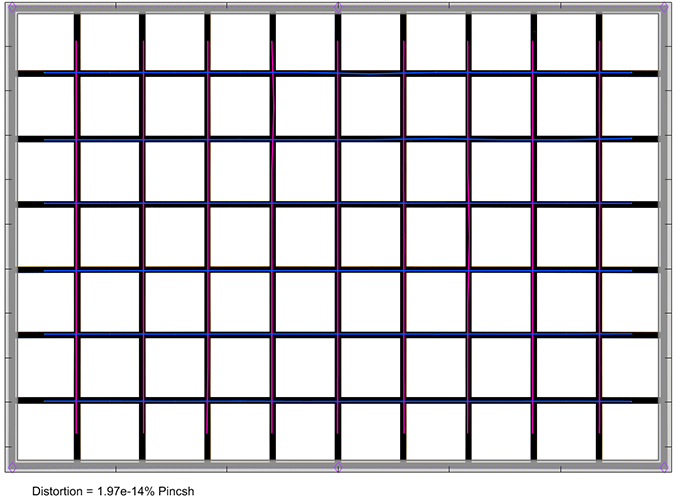
Vignetting
The RAW vignetting is slightly higher than average for a super tele zoom lens. At maximum aperture, the light falloff is visible at around 1.5EV (f-stops). However, stopping down by about one f-stop solves this issue by most standards.

With activated image auto-correction, you won’t notice a significant vignetting.

Resolution
Super-tele lenses are difficult beasts and the manufacturers have to live with some compromises in the design – also to keep the price on a sane level. The Tamron 150-500mm f/5-6.7 Di III VC VXD is no different in this respect. At 150mm, the lens is very good to excellent in the image center and the outer image field is still on a good to very good level. There is, however, a caveat here – heavy field curvature, which defocused flat objects in the corners. This is mostly relevant at closer focus distances, less so near “infinity”. The field curvature is gone at 250mm and the overall resolution is maintained. At 400mm, there is just a marginal decrease in performance. At 500mm, the center remains very good, although some corner softness is creeping in at this setting.
The centering quality of the tested sample was Okay.
Below is a simplified summary of the formal findings. The chart shows line widths per picture height (LW/PH) which can be taken as a measure of sharpness. If you want to know more about the MTF50 figures you may check out the corresponding Imatest Documentation.

Chromatic Aberrations (CAs)
Lateral CAs (color shadows at the image borders) are quite well controlled, with an average pixel width of around 1px at image borders. Image auto-correction will take care of this, of course.

Bokeh
Super-tele zoom lenses tend to have a rather busy bokeh, specifically with respect to the rendering of out-of-focus highlights. So how does the Tamron 150-500mm f/5-6.7 Di III VC VXD manage in this respect?
The highlight discs (here: at ~300mm) show a relatively busy inner structure and there’s also some outlining that is emphasized when stopping down. The more edgy aperture shape starts to show up at f/11. This shows once more that prime lenses still rule the scene here.

The shape of the highlights tends to deteriorate towards the image borders – this is due to mechanical vignetting. However, the rendering is still pretty pleasing, even in the image corners. The highlight discs are ellipsoid here at max aperture. Stopping down “repairs” the corner discs but it requires f/11 for a complete correction (at the expense of ending up with edgy “discs”).

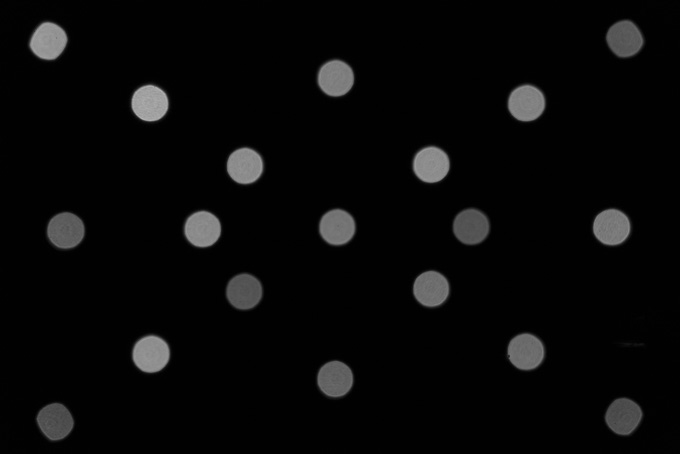

The general rendition in the focus transition zones is surprisingly smooth both in the background (shown to the left below) as well as in the foreground (to the right).

Competition
The Tamron 150-500mm f/5-6.7 Di III VC VXD has two main competitors in Sony E mount – the already mentioned Sony FE 200-600mm f/5.6-6.3 G OSS (to the right) and the Sigma 150-600mm f/5-6.3 DG DN OS Sports (center w/lens hood). In terms of optical performance, the Sony lens remains the king in this class but it is big and also substantially more expensive. However, remember that you also gain a bit of speed and these extra 100mm at the long end. And nothing beats a long tele but a longer one. The Sigma lens sits in between the two. It shares the paper specs of the Sony lens while still being a little smaller at 150mm at least. We haven’t tested this one yet but it’s probably in the same ballpark as the Tamron lens optically. Keep in mind that while there is a difference in size, the difference in weight is pretty much negligible. They all come in around 2 kg plus/minus a bit.
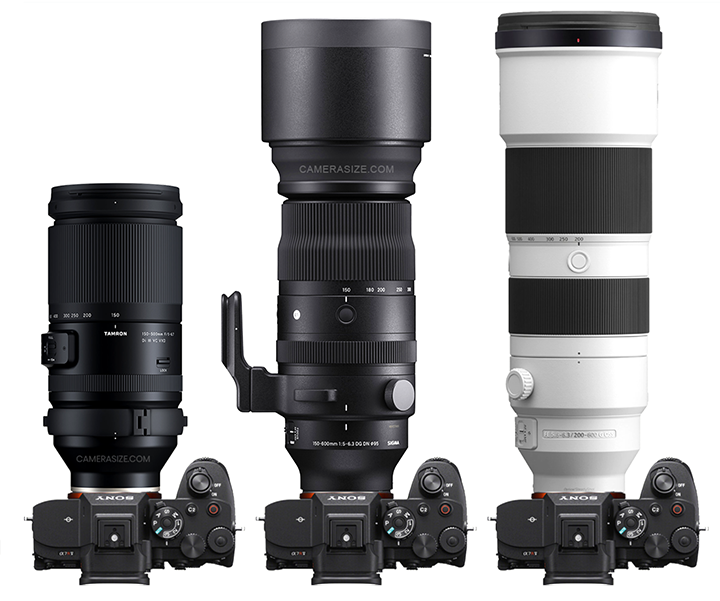
Samples
The Tamron 150-500mm f/5-6.7 Di III VC VXD is a very capable super-tele zoom lens. Its center quality is certainly good enough for the purpose it is meant for. In the lower focal length range, it touches excellent quality in the center and it’s still very good at 500mm. The outer image field is a bit of a mixed bag. At 150mm, the sharpness is very good but it suffers from a rather heavy field curvature, mostly visible at close to medium focus distances. The field curvature is gone at 250mm and the borders/corners are pretty good until 400mm. They do soften at 500mm, though. That being said – keep in mind that the border/corner quality is mostly irrelevant with such a lens. The lateral CAs are well controlled and eliminated via auto-correction anyway. The lens also shows fairly high image distortion in RAW files (only). The vignetting characteristic is a tad high in RAW mode but no issue after correction, of course. The bokeh has two aspects. The general blur is actually pretty smooth, whereas out-of-focus highlights can be rather nervous.
The build quality left a positive impression despite the extensive use of plastics. It feels solid and there is no wobbling whatsoever, even when extended to 500mm. The small focus ring isn’t the best in the business but the zoom ring is surprisingly smooth despite the heavy weight of the inner lens tube. We liked the push/pull zoom lock mechanism – which is also needed due to the extending zoom design here. The AF speed depends heavily on the used Sony camera. It’s not a speed demon on older bodies but if you own the latest and greatest, the AF is impressively fast and noiseless. The VC image stabilizer gave us about three f-stops which is decent enough given the long focal length.
In our book, the primary differentiator of the Tamron 150-500mm f/5-6.7 Di III VC VXD is the compact size. It is much more backpack-friendly than the big Sony FE 200-600mm f/5.6-6.3 G OSS. Some users will also appreciate the shorter minimum focal length, which is certainly making it somewhat more versatile. However, the king (the Sony lens) isn’t dead
-
Optical Quality
-
Mechanical Quality
-
Price/Performance


